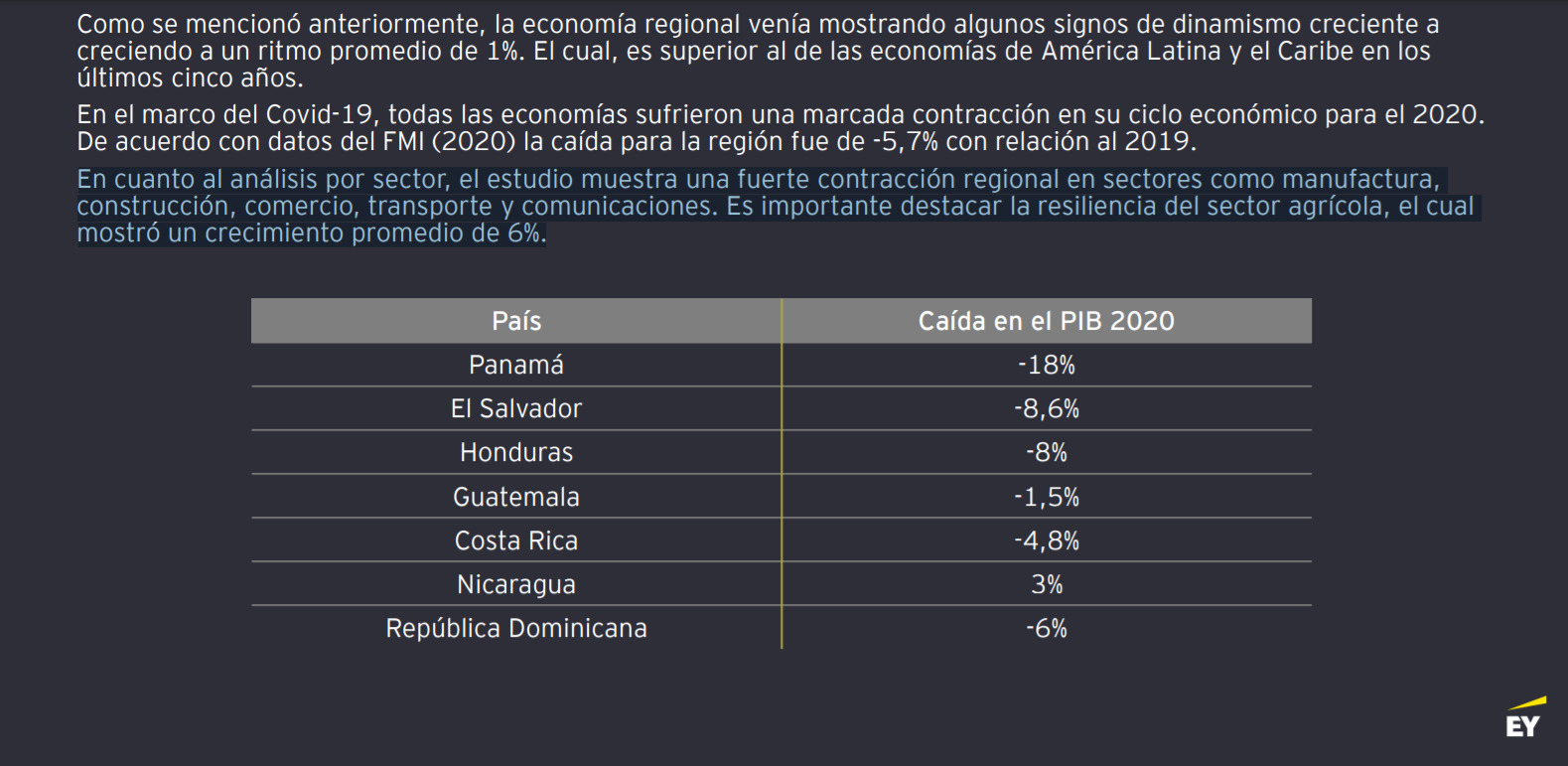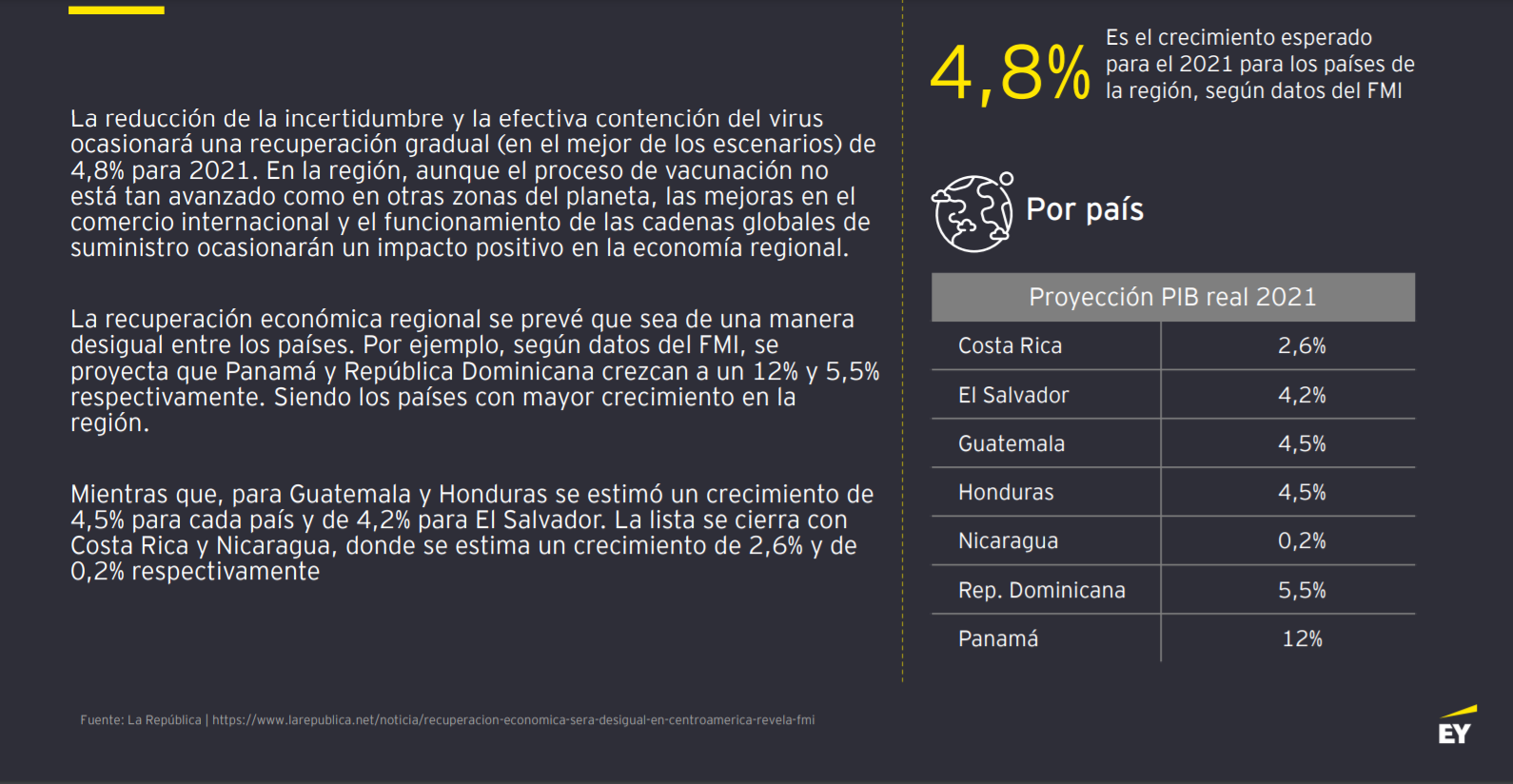The Secretariat for Central American Economic Integration (SIECA) released its document "Economic and Commercial Outlook for Central America", which presents an analysis of the current and future economic reactivation for the region.
Prior to the pandemic, the regional economic performance showed an improvement in its dynamism influenced by domestic demand and although by 2020 that dynamism was considerably reduced, a new cycle of moderate economic recovery is expected for the coming years.

According to the projections of the International Monetary Fund (IMF) for 2021 the global economy will present a moderate growth of around 6% for the current year and 4.4% for 2022.
According to the document presented, the positive projections are supported by the economic stimulus measures imposed by the countries, which reduce uncertainty in the markets. Vaccination campaigns and their distribution to all countries could substantially accelerate the global economic recovery.

The regional economy has been showing some signs of growing dynamism, growing at an average rate of 1%. This is higher than that of the economies of Latin America and the Caribbean in the last five years. Within the framework of Covid-19, all economies suffered a marked contraction in their economic cycle for 2020. According to IMF data (2020) the drop for the region was -5.7% compared to 2019.
As for the analysis by sector, the study shows a strong regional contraction in sectors such as manufacturing, construction, commerce, transportation and communications. It is important to highlight the resilience of the agricultural sector, which showed an average growth of 6%.
In relation to the regional recovery, the reduction of uncertainty and the effective containment of the virus will cause a gradual recovery of 4.8% by 2021, according to the IMF. In the region, although the vaccination process is not as advanced as in other parts of the world, improvements in international trade and the functioning of global supply chains will have a positive impact on the regional economy.
The regional economic recovery is expected to be uneven across countries. For example, according to IMF data, Panama and the Dominican Republic are projected to grow at 12% and 5.5%, respectively. These are the countries with the highest growth in the region.
Meanwhile, for Guatemala and Honduras a growth of 4.5% was estimated for each country and 4.2% for El Salvador. The list closes with Costa Rica and Nicaragua, where growth is estimated at 2.6% and 0.2%, respectively.

The study also shows the variation rate of the IMAE (Monthly Economic Activity Index) for each country in the region. This rate considers the variation of the months of March 2020 and 2021.
In which the Dominican Republic and El Salvador stand out as the countries where such variation is higher. On the other hand, Nicaragua and Costa Rica are the countries that show the slightest improvement. In general terms, this index improved by an average of 6.62% for the region and Panama are isolated from the positive variation.

The document concludes that, by 2021, the global economy shows important signs of recovery and everything points to a 6% growth by the end of the year. This will depend to a large extent on the correct distribution of vaccines worldwide and, therefore, on the containment of the virus.
- An analysis of the variation of the IMAE showed that in march almost all the countries of the region showed a positive performance compared to march 2020.
- The Secretariat for Central American Economic Integration (SIECA), proposes intra-regional trade as one of the main forms of economic reactivation in the area. According to SIECA's Secretary General.
"Central America enjoys a strong intraregional market; 99.9% of the region's products comply with the Central American origin regime".
In addition, this solution is considered a key tool to minimize the impacts of Covid-19 in the region, since 31% of the exports of each country in the region stay in the same region and 14% of the imports of each country in the region come from the same region.
 English
English  Español
Español 
